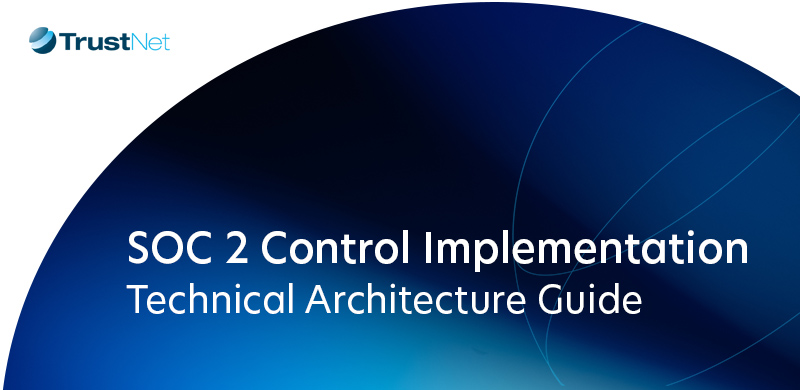Healthcare’s Cyber Guard: Innovative Solutions to Protect Patient Data & HIPAA

The healthcare sector has become a prime target for cybercriminals. The consequences of data breaches extend beyond financial loss, risking patient privacy and the integrity of healthcare services. Thus, the industry faces an urgent call to armor itself against the growing threat landscape.
This article explores the innovative solutions emerging as healthcare’s cyber guard, aimed at fortifying patient data and ensuring steadfast compliance with HIPAA. In doing so, it not only safeguards the privacy and security of patient information but also upholds the trust and reliability foundational to patient care.
Understanding HIPAA Compliance
Grasping the intricacies of HIPAA is essential for complete compliance and nurturing an environment centered around the confidentiality and security of patient information within healthcare entities.
— The Privacy Rule: This critical component of HIPAA sets national standards for safeguarding individual medical records and other personal health information (PHI). It encompasses healthcare providers, health plans, and healthcare clearinghouses that deal with health information in an electronic format. This rule demands the secure handling of PHI and specifies the conditions under which PHI may be shared.
— The Security Rule: Focused on protecting electronic PHI (e-PHI), the Security Rule specifies guidelines for ensuring the confidentiality, integrity, and availability of e-PHI. It obligates covered entities to enact physical, technical, and administrative protections to guard electronic health information from unauthorized entry, changes, or deletion.
— The Breach Notification Rule: Should there be a breach involving PHI that is not secured, this regulation outlines the necessary steps for informing impacted individuals, the Secretary of Health and Human Services, and sometimes, the media. Its purpose is to maintain openness and swift action during breaches to mitigate potential damage to those affected.
For healthcare organizations, compliance goes beyond simply following these rules; it involves fully incorporating them into daily operations.
Learn more about our HIPAA compliance services Here
Assessing Cybersecurity Vulnerabilities
Here’s a closer look at how organizations can effectively assess their cybersecurity vulnerabilities:
Conducting a Comprehensive Risk Assessment
A comprehensive risk assessment involves a detailed evaluation of your IT systems, identifying where your organization is most vulnerable to cyber threats. This step is crucial for understanding your organization’s specific risks and prioritizing them based on their potential impact. Key components of a successful risk assessment include:
- Identification of Assets: Determining what data, systems, or resources are crucial to your organization’s operations.
- Threat Modeling: Analyzing potential threat actors and their methods to target your organization’s assets.
- Vulnerability Analysis: Utilizing tools and techniques to discover vulnerabilities within your systems and software.
Identifying Gaps and Weaknesses in Existing Security Measures
After understanding the risks, the next step is identifying gaps in your security measures. This involves examining your security protocols and determining where they fall short in protecting against identified vulnerabilities. Effective strategies for this phase include:
- Security Audits and Reviews: Regularly auditing your security measures against industry standards and best practices to identify shortcomings.
- Penetration Testing: Simulating cyber-attacks on your systems to test the effectiveness of your security measures and identify exploitable vulnerabilities.
- Regular Software Updates: Ensuring all software and systems are up-to-date with the latest security patches to mitigate known vulnerabilities.
Incorporating a systematic approach to vulnerability assessment helps organizations stay ahead of potential threats by proactively identifying and mitigating risks.
Assessing Cybersecurity Vulnerabilities
Here, we outline the key cybersecurity strategies for HIPAA compliance across three primary areas: Administrative, Physical, and Technical Safeguards.
Administrative Safeguards
These safeguards are crucial for HIPAA compliance, emphasizing the governance of workforce behavior and the protection strategies for electronic Protected Health Information (ePHI).
- Development of Policies and Procedures: Craft and maintain explicit policies and procedures that align with your entity’s operations and adhere to HIPAA standards.
- Evaluation and Mitigation of Risks: Regularly execute comprehensive risk evaluations to pinpoint potential threats to ePHI’s confidentiality, integrity, and accessibility. Apply appropriate safeguards to lessen these risks.
- Education and Consciousness of the Workforce: Conduct continuous education and awareness sessions for employees to reinforce their understanding of their part in achieving HIPAA compliance.
Physical Safeguards
These measures protect electronic systems, equipment, and data from physical threats and unauthorized access.
- Regulation of Facility Entry: Formulate guidelines to restrict physical entry to facilities while enabling legitimate access as needed.
- Security of Workstations: Secure workstations that access ePHI in protected locations and draft usage policies.
- Management of Devices and Media: Set forth procedures for the handling, removal, and disposal of hardware and storage media holding ePHI.
Technical Safeguards
These protocols concentrate on the technologies used to defend ePHI and manage who has access to it.
- Access Management: Enact technical policies and methods to guarantee that only authorized personnel can interact with ePHI.
- Monitoring Systems: Utilize technical solutions and procedures to log and review actions on systems dealing or interacting with ePHI.
- Protection of Data Transmission: Ascertain that any ePHI sent across open networks is secured against unauthorized interception.
Following this structured approach can enhance the safeguarding of patient details and help healthcare organizations efficiently manage HIPAA compliance complexities.
Ensuring Continuous HIPAA Compliance
Healthcare organizations must continuously monitor and audit their security controls while staying abreast of changes in HIPAA regulations and industry best practices. Here’s how organizations can maintain a steadfast commitment to HIPAA compliance:
Ongoing Monitoring and Auditing of Security Controls
Regular monitoring and auditing are essential for identifying potential vulnerabilities and ensuring the effectiveness of existing security measures. This proactive approach allows for the timely detection and remediation of any issues that could compromise patient data or compliance status.
- Implement Continuous Monitoring Systems: Utilize advanced software solutions that continuously scan for anomalies, threats, and changes in the security environment, ensuring round-the-clock vigilance.
- Schedule Regular Audits: Conduct comprehensive audits of all HIPAA-related policies, procedures, and security measures regularly to ensure they meet current standards and requirements.
- Review Access Logs: Regularly review the system and data access logs to detect unauthorized or suspicious activities that could signal a breach or non-compliance.
Adapting to Evolving HIPAA Regulations and Industry Best Practices
HIPAA regulations and cybersecurity best practices continually evolve to address emerging threats and technological advancements. Staying informed and adaptable is crucial for maintaining compliance and protecting patient data.
- Stay Informed on Regulatory Changes: Keep abreast of any updates or changes to HIPAA regulations by regularly consulting official resources, such as the U.S. Department of Health & Human Services (HHS) website.
- Benchmark Against Industry Standards: Compare your organization’s security measures against industry standards and best practices to identify areas for improvement. Organizations like the National Institute of Standards and Technology (NIST) provide valuable guidelines.
- Engage in Continuous Learning: Encourage ongoing education and training for your team on the latest HIPAA requirements, cybersecurity trends, and best practices to foster a culture of compliance and security awareness.
Securing the Future of Healthcare Data with TrustNet
Maintaining patient data’s confidentiality, integrity, and availability while ensuring HIPAA compliance presents a complex challenge for healthcare organizations. This is where partnerships with industry experts, such as TrustNet, become invaluable. Leveraging the knowledge and experience of TrustNet offers a strategic advantage in several key areas:
— Expertise in Compliance and Security: TrustNet brings a wealth of knowledge on the regulatory landscape and the latest cybersecurity threats. Our insights can guide healthcare organizations through the complexities of HIPAA compliance, ensuring that all aspects of patient data protection are addressed comprehensively.
— Advanced Technology Implementation: With access to cutting-edge security technologies and methodologies, TrustNet can fortify healthcare organizations against cyber threats and safeguard patient data effectively.
— Continuous Monitoring and Adaptation: The cyber threat environment and compliance regulations constantly change. TrustNet ensures ongoing vigilance, monitoring security controls, and adapting strategies to meet evolving requirements and emerging threats.
TrustNet provides the skills, tools, and experience necessary for robust data protection and compliance.




